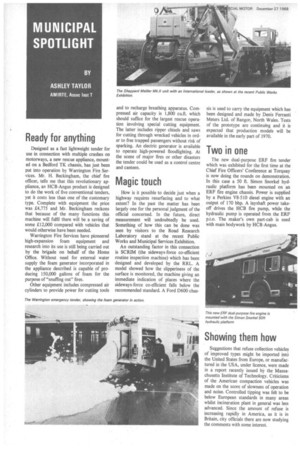Ready for anything
Page 34

If you've noticed an error in this article please click here to report it so we can fix it.
Designed as a fast lightweight tender for use in connection with multiple crashes on motorways, a new rescue appliance, mounted on a Bedford TK chassis, has just been put into operation by Warrington Fire Services. Mr. H. Beckingham, the chief fire officer, tells me that this revolutionary appliance, an HCB-Angus product is designed to do the work of five conventional tenders, yet it costs less than one of the customary type. Complete with equipment the price was £4,775 and Mr. Beckingham reckons that because of the many functions this machine will fulfil there will be a saving of some £12,000 compared with vehicles that would otherwise have been needed.
Warrington Fire Services have pioneered high-expansion foam equipment and research into its use is still being carried out by the brigade on behalf of the Home Office. Without need for external water supply the foam generator incorporated in the appliance described is capable of producing 150,000 gallons of foam for the purpose of "snuffing out" fires.
Other equipment includes compressed air cylinders to provide power for cutting tools and to recharge breathing apparatus. Compressed air capacity is 1,800 cu.ft. which should suffice for the largest rescue operation involving special cutting equipment. The latter includes ripper chisels and saws for cutting through wrecked vehicles in order to free trapped passengers without risk of sparking. An electric generator is available to operate high-powered floodlighting. At the scene of major fires or other disasters the tender could be used as a control centre and canteen.












































































